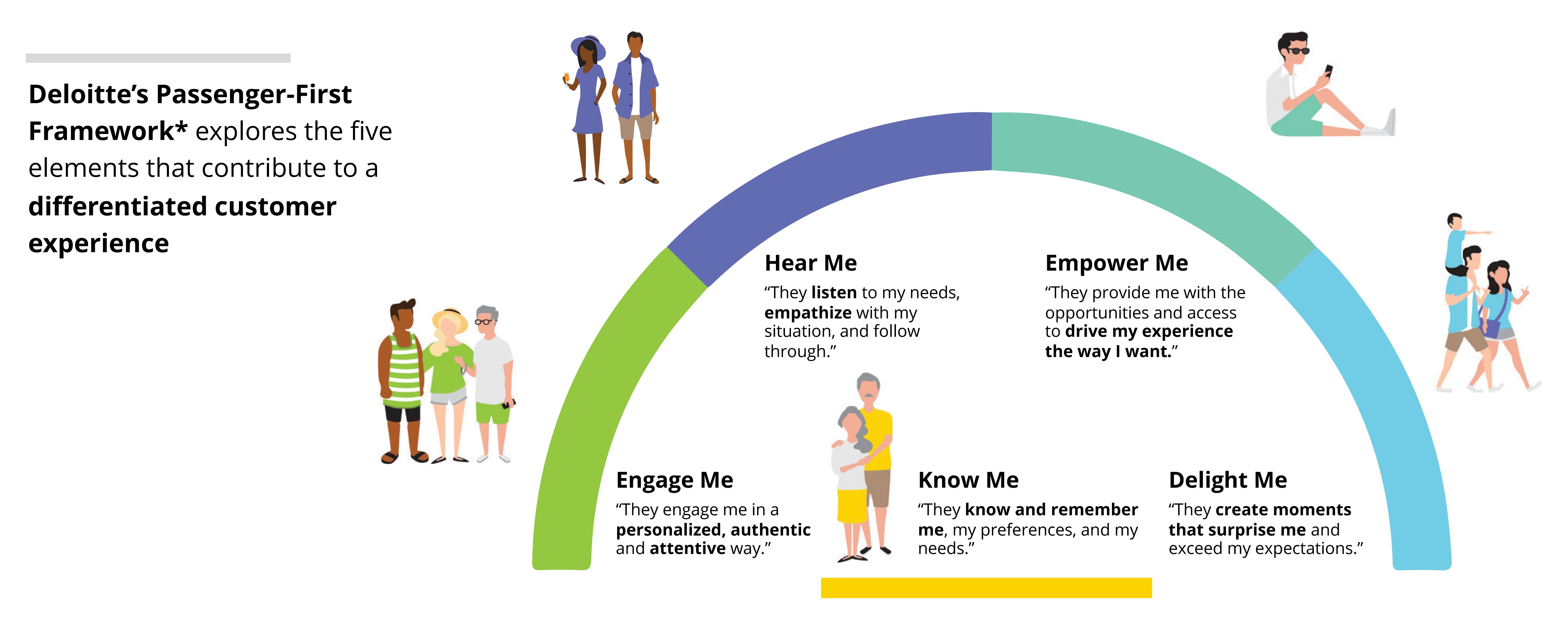Cruise industry analysis on the passenger experience has been saved

Analysis
Cruise industry analysis on the passenger experience
Personalized cruises sail away with profits
High-quality restaurants, modern fitness facilities, and even sustainable practices are no longer enough to earn cruises a five-star rating. This cruise industry analysis explores how cruise operators can raise the bar on passenger experience to attract new demographics of passengers to the cruise industry.
Explore content
- Embarking on new demographics of cruise passengers
- Raising the bar on passenger experience
- Putting passengers first
- The passenger journey sets sail
- How to get started
Embarking on new demographics of cruise passengers
When it comes to the future of customer experience, there are few better businesses to watch than cruises: Once at the forefront of compelling passenger experiences, operators now seek reinvention in an increasingly competitive market.
Cruise operators not only must inject digitally enabled passenger experiences into existing large-scale capital investments, but they should also forge ecosystems via co-opetition (cooperative competition), where cruise operators collaborate with travel, hospitality, and tourism competitors in their ecosystem. Customer experience will influence how cruise operators either flourish or die.
Today’s competitive market is heightened as operators navigate changing cruise passenger demographics. Younger generations, who rate cruises as their favorite type of vacation, are demanding enhanced features and a wider array of unique experiences. As millennials embark on their first cruises, they have an appetite for heightened personalization and customization as compared to prior generations. In response, cruise operators are seeking to one-up the competition by adding more and more unique attributes to ships.
Raising the bar on passenger experience
Things like convenient port locations, great value, and clean rooms go a long way. But many other customer experience elements that may have once been value-adds are now considered essentials. The "new" basics include modern fitness facilities, pleasant community spaces, and high-quality restaurants. Even sustainability practices have moved from a niche offering to a basic demand.
In the "old" basics, cruise operators are making the grade. The "new" basics, for which passengers' expectations may sometimes exceed what they look for in luxury hotels, are where experiences can provide differentiation for cruise operators. For example, "high-quality bars and/or restaurants" are rated as 1.6 times more important by cruise passengers than luxury hotel guests.
Putting passengers first
If the "new" basics keep you in the game, the next-level elements of the passenger experience are what can propel you to new heights—and provide a chance to stand apart from the competition. Our passenger-first framework breaks down five elements that help differentiate the passenger experience.
The passenger-first framework

*The passenger-first framework is Deloitte’s proprietary customer experience methodology. This methodology has been applied to our customer intelligence surveys in the hospitality and restaurants industries, as well as across retail and consumer products sectors.
While all five elements influence the extent to which cruise operators can turn passengers into loyal repeat customers, “empower me” (opportunities and access to
Comparing importance across industries

Source: 2017 Deloitte Cruise Customer Experience Survey. Survey based on a total sample size of 994 respondents.
* Importance scores are indexed scores, centered around an average of 100, and are statistically significant.
The information a cruise operator uses to empower and delight passengers can flow through more than one channel; utilizing multiple channels allows cruise operators to take a multifaceted approach to
The passenger journey sets sail
Today, passengers of all generations both want and use the self-service aspect of the digital channel to address their needs throughout the journey. Cruise operators can continue to refine self-serve options for booking, check-in and checkout, and activity selection. But successfully embedding digital in this new customer-centric world is about more than enabling passenger self-sufficiency through onboard apps. When digital and in-person interactions combine in the hybrid channel, the new touchpoints that result provide an opportunity for the crew to surprise and delight their passengers.
Passenger experience transformation

How to get started
Assess: What is your passenger experience model today?
Understand the demographics of your cruise ship passengers and your company’s guest experience DNA—what defines your organization's customer and digital capabilities—to own disruption and unlock your passenger experience transformation.
Enable: What could your customer experience (CX) be tomorrow?
Dive into data and analytics to create customizable, sustainable, and customer-enabled onboard and off-shore experiences. Determine the minimum viable changes that are needed to splice digital customer DNA into your organization.
Transform: Where do you see your company in 2030?
Own the seas. Implement a digitally enhanced, CX framework focused on the next-gen customer to reimagine your passenger experience and drive sustainable monetary growth.
To explore other ways cruise operators can improve their passenger experience and how you can get started, download our full cruise industry analysis.

Recommendations
Next-gen hotel guests have checked in
The changing guest experience
Through passengers' eyes
Delivering the “right” airline customer experience




Latest news from @DeloitteCB
Sharing insights, events, research, and more